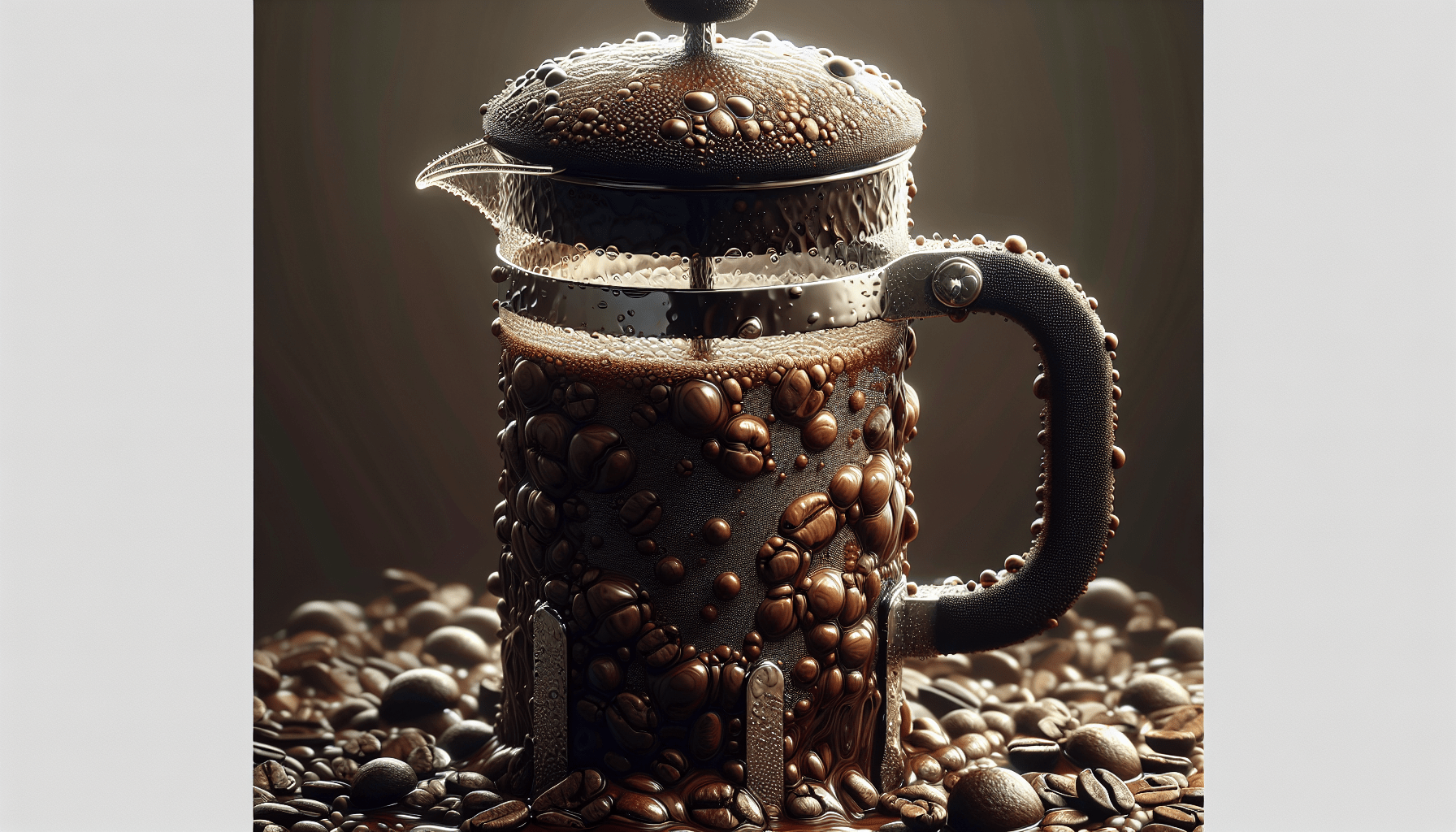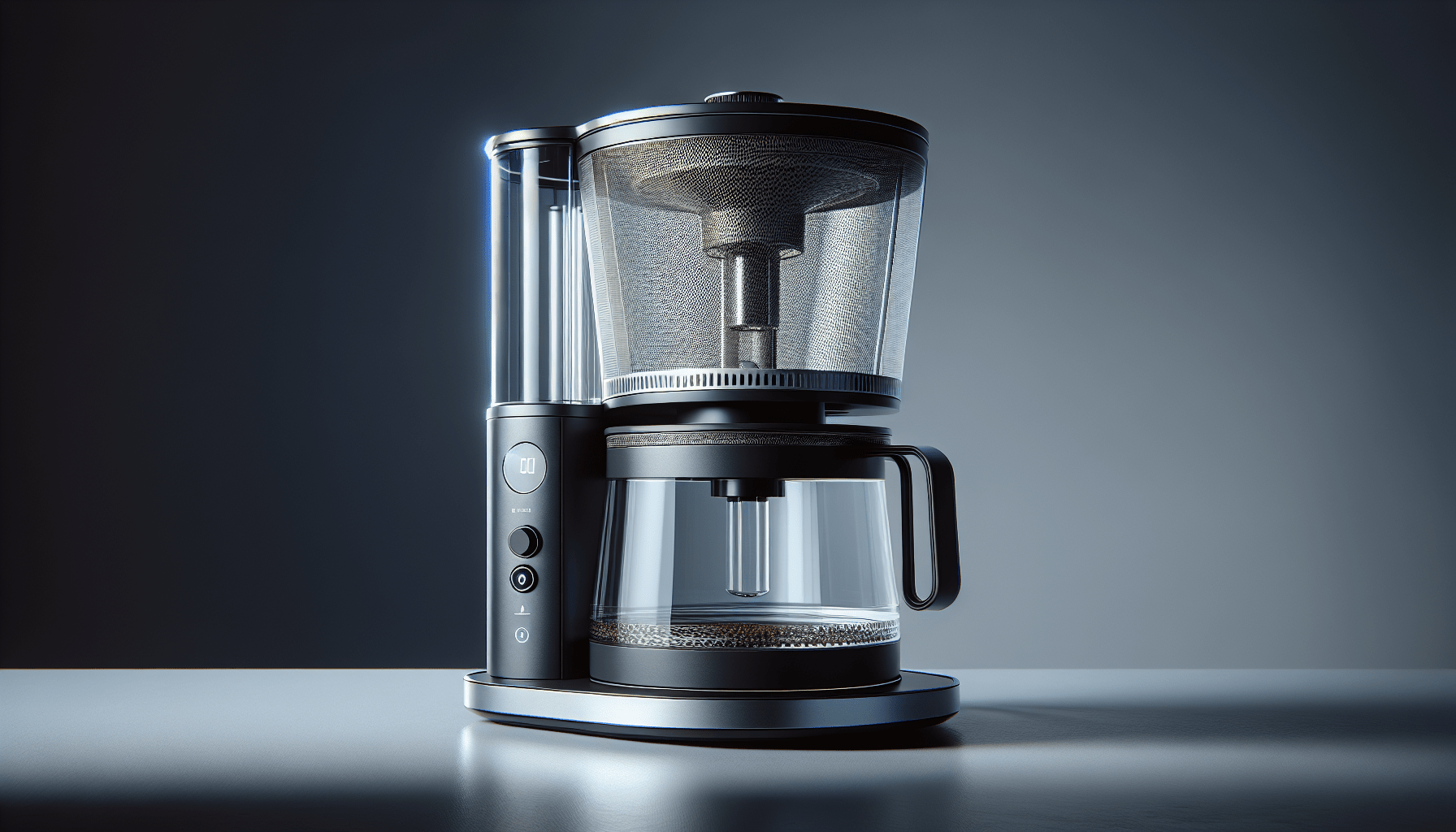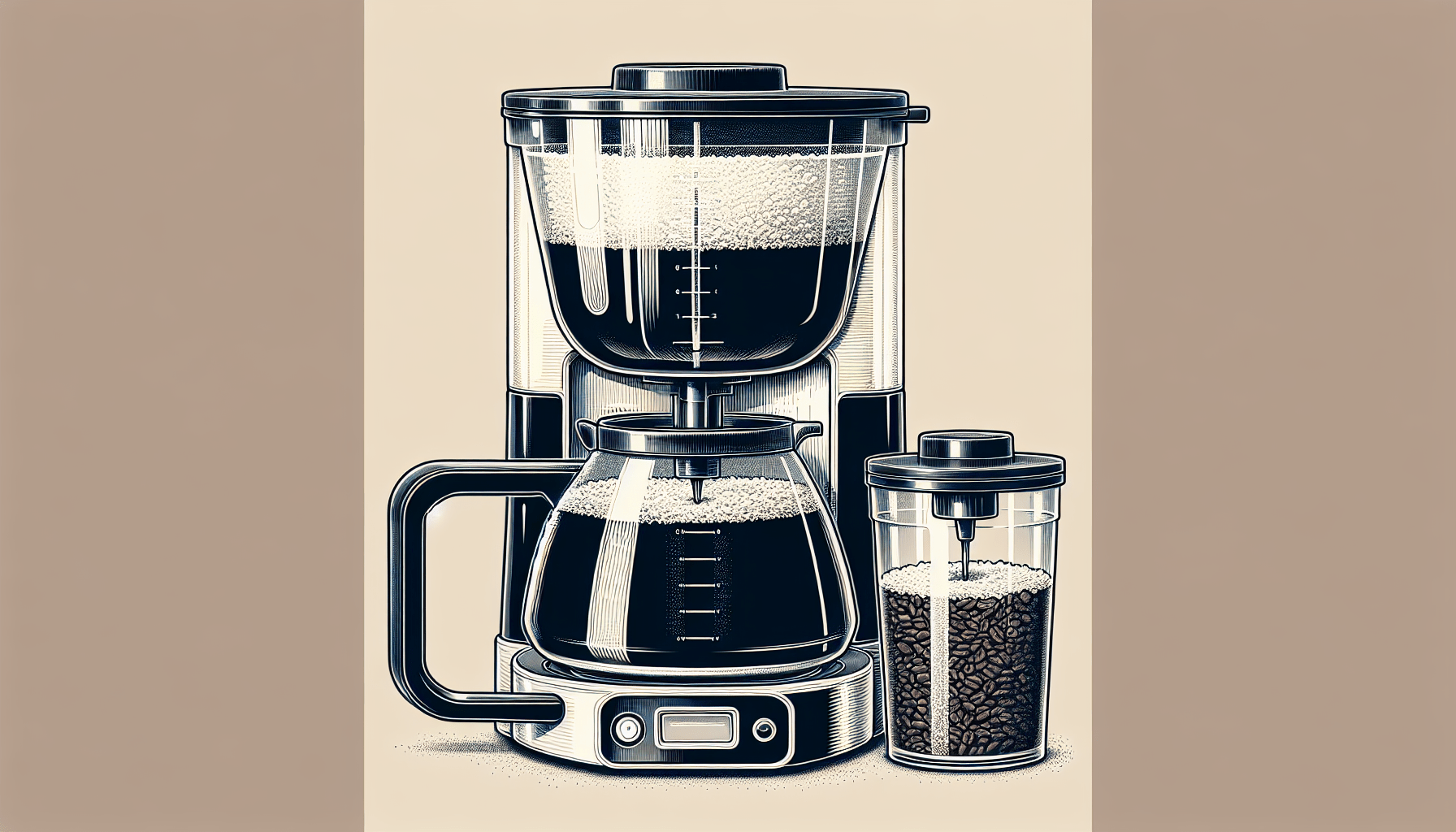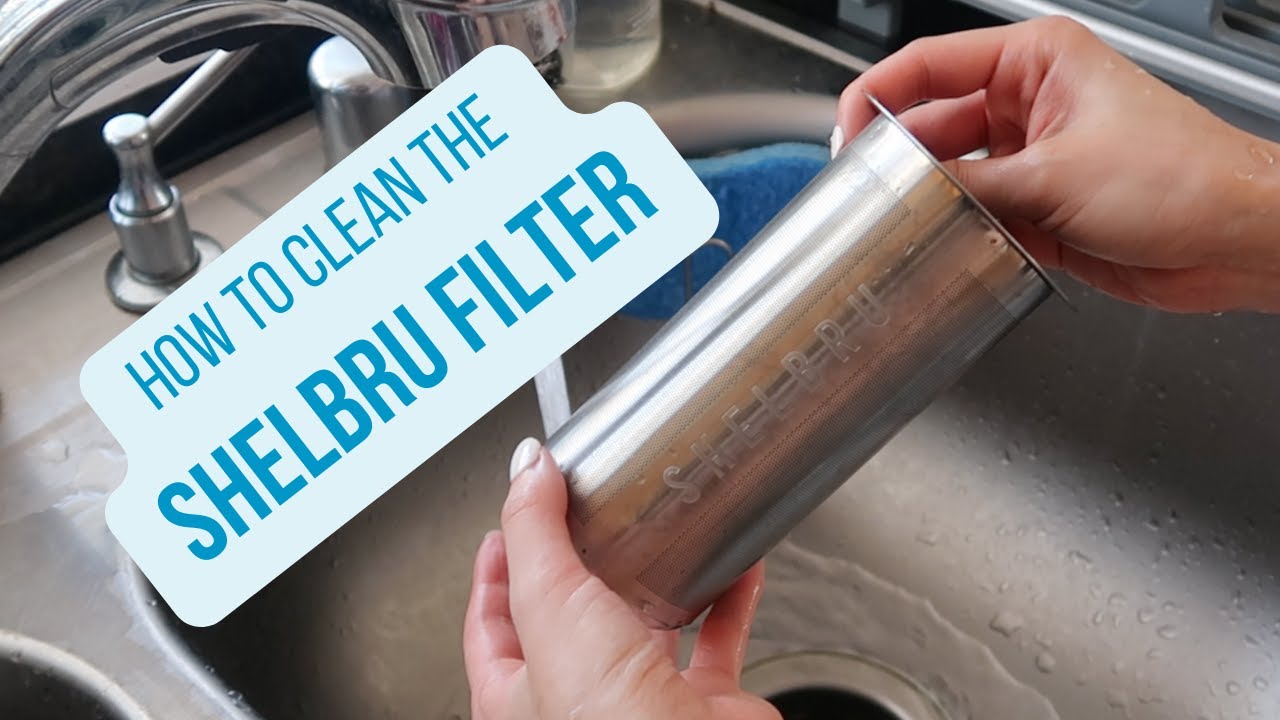If you’re a coffee enthusiast looking for a new way to enjoy your favorite drink, you may wonder if you can use a French press as a cold brew maker. Well, the good news is, you absolutely can! A French press can be a versatile tool in your coffee-making arsenal, allowing you to create a refreshing and smooth cold brew right at home. In this article, we’ll explore the simple steps to transform your French press into a cold brew maker, bringing you the perfect cup of iced coffee every time. So let’s grab our French press and get brewing!
Introduction
Explanation of French press and cold brew methods
You may have heard of both French press and cold brew methods when it comes to making coffee, but what exactly are they?
A French press, also known as a press pot or plunger pot, is a popular coffee brewing device that consists of a cylindrical glass or stainless steel container with a plunger and a mesh filter attached to it. The coffee is brewed by steeping coarsely ground beans in hot water, then pressing the plunger down to separate the grounds from the liquid.
On the other hand, cold brew is a method of brewing coffee using cold or room temperature water instead of hot water. This slow steeping process extracts the flavors from the coffee grounds, resulting in a smooth, low-acidity beverage. Typically, cold brew is made by soaking coarse coffee grounds in cold water for anywhere from 12 to 24 hours and then straining the liquid.
Interest in using French press for cold brew
You might be wondering why anyone would want to use a French press for cold brew when there are already dedicated cold brew makers available on the market. While it’s true that specialized equipment can make the process easier, using a French press for cold brew offers a convenient and cost-effective alternative.
French presses are commonly found in many households, making them readily available for experimenting with cold brew. Additionally, since French presses are designed to extract the flavors from coffee grounds, they can be a suitable choice for making cold brew. By understanding the differences and making a few adjustments in the brewing process, you can achieve delicious cold brew coffee using a French press.
Understanding Cold Brew
Definition and process of cold brew
Before diving into how to make cold brew with a French press, it’s essential to understand the concept of cold brew itself. Cold brew refers to the process of brewing coffee using cold or room temperature water instead of hot water. This method allows for a slower extraction of flavors, resulting in a smoother and less acidic cup of coffee.
The process of making cold brew involves combining coarse coffee grounds and water in a container and allowing them to steep for an extended period, usually 12 to 24 hours. During this time, the water gradually extracts the flavors from the coffee grounds, producing a concentrated liquid known as cold brew coffee concentrate. After steeping, the liquid is then filtered to separate the grounds from the final brew.
Advantages and characteristics of cold brew
Cold brew has gained popularity for several reasons, including its unique characteristics and advantages. One of the key advantages of cold brew is its low acidity. The slow extraction process results in a coffee that is smoother and less bitter, making it a favorable choice for those with sensitive stomachs or acid reflux issues.
Furthermore, cold brew is known for its rich and full-bodied flavor profile. The prolonged steeping time allows for a more thorough extraction of oils and flavors from the coffee grounds, resulting in a brew that is both bold and smooth. Additionally, cold brew tends to have less caffeine than traditional hot brewed coffee, which can be beneficial for individuals aiming to limit their caffeine intake.
Overall, cold brew offers a refreshing alternative to hot coffee, with its unique flavors and low acidity making it a popular choice for coffee enthusiasts seeking a different brewing experience.
French Press Overview
Explanation of what a French press is
A French press is a simple and elegant coffee brewing device that has been in use for many years. It consists of a glass or stainless steel container with a plunger and a mesh filter. The basic design of a French press allows for full control over the brewing process, making it a popular choice among coffee enthusiasts.
How a French press is typically used
Using a French press is relatively straightforward. To brew coffee, you start by adding coarsely ground coffee to the press. Then, you pour hot water over the grounds and let the mixture steep for a few minutes. After the brewing time, you press down the plunger slowly, which pushes the grounds to the bottom, trapping them and allowing the brewed coffee to be poured from the top.
Components and features of a French press
A French press typically consists of the following components:
- Container: The container can be made of glass or stainless steel and holds the brewed coffee.
- Plunger: The plunger is a long metal rod with a handle attached to it. It is used to press down the grounds and separate them from the coffee.
- Mesh filter: The mesh filter is attached to the bottom of the plunger and helps in straining the coffee grounds, allowing only the liquid to pass through.
- Lid: The lid is usually made of plastic or metal and covers the container, helping to retain heat during the brewing process.
French presses come in various sizes, ranging from single-serve to larger models suitable for multiple servings. Some French presses also have additional features, such as double-walled insulation to keep the coffee hot for longer periods.
Overall, the simplicity and versatility of a French press make it a valuable tool in any coffee lover’s collection.
Comparing Cold Brew and French Press
Similarities and differences in brewing techniques
While cold brew and French press brew both involve steeping coffee grounds in water, there are notable differences in their brewing techniques. Cold brew is made by steeping coarse coffee grounds in cold or room temperature water over an extended period, typically 12 to 24 hours. This long steeping time allows for a slow extraction of flavors, resulting in a smooth and less acidic brew.
On the other hand, French press brewing involves adding hot water to coarsely ground coffee and letting it steep for a shorter duration, usually 3 to 4 minutes. The hot water facilitates a more rapid extraction of flavors, creating a more robust and full-bodied cup of coffee compared to cold brew.
Impact of brewing time and temperature on flavor
The brewing time and temperature greatly influence the flavor of the final brew in both methods. In cold brew, the extended steeping period allows for a gentle extraction of flavors, resulting in a brew that is smooth and less acidic. The lower temperatures also contribute to these characteristics, as the cold water doesn’t extract as much acidity from the coffee.
On the other hand, the shorter steeping time and hotter water used in French press brewing extract a wider range of flavors and oils from the coffee grounds. This results in a more pronounced flavor profile, with a fuller body and higher acidity compared to cold brew.
Texture and extraction variations between methods
The brewing methods of cold brew and French press also impact the texture and extraction of the final brew. Cold brew tends to have a smoother and silkier mouthfeel due to the longer steeping time. The slow extraction process leads to a richer concentration of flavors and oils, resulting in a brew with a thicker consistency.
In contrast, French press coffee has a slightly grittier texture due to the presence of sediment in the coffee. The mesh filter in a French press doesn’t catch all the tiny coffee particles, which can contribute to the texture. Some coffee drinkers enjoy this texture, while others prefer a cleaner cup of coffee with minimal sediment.
Using a French Press for Cold Brew
Step-by-step guide for making cold brew with a French press
If you’re interested in making cold brew with a French press, here’s a step-by-step guide to get you started:
- Coarsely grind your coffee beans. Aim for a coarseness similar to what you would use for French press brewing.
- Add the ground coffee to the French press. The ratio of coffee to water typically used for cold brew is 1:4 or 1:5. For example, if you’re using 50 grams of coffee, you would use 200 to 250 milliliters of water.
- Pour cold or room temperature water over the coffee grounds, ensuring that all the grounds are fully saturated.
- Give the mixture a gentle stir to ensure even saturation and extraction.
- Place the lid and plunger on the French press, but do not press it down.
- Let the coffee steep in the French press for 12 to 24 hours. You can experiment with the brewing time to find your preferred strength and flavor profile.
- After steeping, slowly press down the plunger to separate the grounds from the liquid. Take care not to rush this step to avoid excessive sediment in your final brew.
- Pour the cold brew concentrate into a separate container or serve it directly from the French press. The concentrate can be stored in the refrigerator and diluted to taste before consumption.
Adjustments in brewing ratio and time
When using a French press for cold brew, you may need to make adjustments to the brewing ratio and steeping time to achieve the desired flavor profile. Unlike traditional cold brew methods, which use a higher coffee-to-water ratio and longer steeping times, using a French press may require a slightly different approach.
Experiment with different coffee-to-water ratios, such as 1:4 or 1:5, to find the strength that suits your taste preferences. Additionally, you can adjust the steeping time to anywhere between 12 to 24 hours, depending on the intensity of flavor you desire.
Tips for achieving optimal results
To ensure optimal results when using a French press for cold brew, consider the following tips:
- Use freshly roasted coffee beans and grind them just before brewing for the best flavor.
- Use a coarse grind size to prevent over-extraction and minimize sediment in the final brew.
- Experiment with different coffee-to-water ratios and steeping times to find your preferred taste and strength.
- Stir the coffee grounds and water mixture gently to ensure even extraction.
- Press the plunger down slowly to separate the grounds from the liquid, reducing sediment in the final brew.
- Store the cold brew concentrate in a separate container in the refrigerator for up to a week.
By following these tips and experimenting with the brewing process, you can achieve a flavorful and refreshing cold brew using a French press.
Advantages and Disadvantages
Pros of using a French press as a cold brew maker
Using a French press for cold brew offers several advantages:
- Cost-effective: If you already own a French press, there is no need to purchase additional equipment specifically for cold brew. This can save you money while still allowing you to enjoy the benefits of cold brew coffee.
- Convenience: French presses are relatively easy to use and require minimal preparation. The steeping process can be done overnight, allowing you to wake up to a ready-to-drink cold brew in the morning.
- Versatility: A French press can serve multiple purposes, making it a versatile tool in the kitchen. In addition to cold brew, you can also use it for traditional hot brewing or even steeping loose-leaf tea.
Cons or limitations of using a French press for this purpose
While using a French press for cold brew has its advantages, it also has a few limitations:
- Smaller batch size: Most French presses are designed for single or multiple servings, which may limit the quantity of cold brew you can make at one time. This can be problematic if you want to prepare larger batches for entertaining or for an extended period.
- Sediment in the final brew: French presses are not specifically designed for producing sediment-free cold brew. While some people enjoy the grittiness of French press coffee, others may find the sediment undesirable.
- Steeping time limitations: Unlike dedicated cold brew makers that allow for longer steeping times, using a French press may not be suitable for those who prefer stronger or more concentrated cold brew. The shorter steeping time can result in a milder and less intense flavor profile.
Despite these limitations, a French press can still be an excellent option for making cold brew if you are willing to work within its constraints and adjust brewing techniques accordingly.
Alternatives to a French Press
Introduction to dedicated cold brew makers
If you find that using a French press doesn’t meet your cold brew needs, there are dedicated cold brew makers available on the market. These specialized devices are designed to make the cold brewing process more convenient and efficient.
Dedicated cold brew makers often come with features that facilitate the brewing process, such as built-in filters, adjustable steeping times, and larger capacity. Some popular options include immersion-style cold brew systems, cold drip brewers, and cold brew pitchers with integrated filters.
Other commonly used methods for making cold brew
Apart from using a French press or dedicated cold brew makers, there are other methods commonly used for making cold brew:
- Mason jar method: This is a simple and cost-effective way to make cold brew. It involves combining coffee grounds and water in a mason jar, sealing it, and letting it steep for the desired length of time. After steeping, the liquid is filtered using a separate filter or cheesecloth.
- Filtron method: The Filtron cold brew system is another popular option. This method uses a plastic container with a filter and allows for steeping coffee grounds in cold water for an extended period. The filtered concentrate is collected in a separate vessel, and it can be diluted before consumption.
- Slow drip method: This method involves using a slow drip cold brew tower or device that allows water to drip slowly onto coffee grounds. The water eventually passes through a filter and collects in a container as cold brew concentrate. This method offers precise control over brewing time and extraction.
Comparison of pros and cons with French press
When comparing these alternative methods with using a French press for cold brew, it’s essential to consider the pros and cons of each approach. While dedicated cold brew makers may offer convenience and larger batch sizes, they can be more expensive and require additional storage space. Mason jar methods are cost-effective but lack filtration systems, potentially resulting in more sediment in the final brew. Slow drip methods provide control but can be more complex to set up and require more time.
Ultimately, the choice between using a French press or other methods for cold brew depends on your personal preferences, budget, and desired brewing experience.
Tips for Repurposing a French Press
Alternative uses for a French press other than cold brew
Aside from using a French press for coffee brewing, there are several alternative uses for this versatile tool:
- Steeping loose-leaf tea: French presses are not limited to coffee; they can also be used for steeping loose-leaf tea. Simply add the tea leaves to the press, pour hot water over them, let it steep, and press down the plunger to separate the tea leaves from the liquid. This allows for a convenient and mess-free way to enjoy your favorite tea.
- Straining homemade broth or stock: Use your French press as a convenient strainer for homemade broth or stock. After cooking, pour the liquid into the French press, press down the plunger to separate any solids, and pour the flavorful liquid into a separate container.
- Frothing milk: French presses can be used to froth milk for lattes or cappuccinos. Heat the milk on the stovetop or in the microwave, pour it into the French press, and rapidly move the plunger up and down to create a frothy texture. This provides a quick and easy solution for achieving café-quality frothed milk at home.
Creative ways to utilize a French press in the kitchen
In addition to the alternative uses mentioned above, a French press can be a versatile tool for various kitchen tasks:
- Making homemade whipped cream: Add heavy cream and any desired flavorings, such as vanilla or powdered sugar, to the French press. Press and release the plunger rapidly until the cream thickens and forms stiff peaks. It’s a quick and effortless way to whip cream for desserts or beverages.
- Infusing flavored oils: Use a French press to infuse oils with herbs, spices, or citrus zest. Place the desired ingredients in the press, add oil, and let it infuse for a couple of hours or overnight. The resulting flavored oils can be used for dressings, marinades, or as a finishing touch for various dishes.
- Making cold-infused beverages: Alongside cold brew coffee, a French press can be used to make cold-infused beverages like fruit-infused water or herbal iced tea. Add sliced fruits, herbs, or tea bags to the press, fill it with cold water, and let it infuse in the refrigerator for a refreshing and flavorful beverage.
Maintenance and cleaning tips
To keep your French press in good condition and ensure optimal performance, consider these maintenance and cleaning tips:
- Disassemble the French press by removing the plunger, filter, and lid for thorough cleaning.
- Rinse the components with warm water immediately after use to remove any coffee residue and grounds.
- Use a non-abrasive sponge or brush to clean the mesh filter and the inside of the glass or stainless steel container. Avoid using harsh chemicals or abrasive cleaners, as they can damage the materials.
- Occasionally, soak the components in a mixture of warm water and mild dish soap to remove any stubborn stains or odors. Rinse thoroughly afterward to remove any soap residue.
- Dry the French press components thoroughly before reassembling or storing to prevent the growth of mold or mildew.
- Regularly inspect the mesh filter for any signs of wear and tear. If necessary, replace it to ensure optimal brewing performance.
By following these maintenance and cleaning tips, you can prolong the lifespan of your French press and enjoy many delicious cups of coffee, cold brew, or other creative beverages.
Conclusion
In conclusion, using a French press for cold brew offers a convenient and cost-effective alternative to dedicated cold brew makers. By understanding the differences in brewing techniques and making a few adjustments, you can achieve delicious cold brew coffee with a French press. While it may have some limitations compared to specialized equipment, a French press provides versatility in the kitchen and can serve multiple purposes.
When choosing a cold brew method, it’s important to consider your preferences, budget, and desired brewing experience. Whether you opt for a French press or explore other methods, the world of cold brew offers a flavorful and refreshing alternative to hot brewed coffee.
Further Resources
For additional information and inspiration on cold brew, consider exploring the following resources:
-
Books:
- “Cold Brew Coffee: Techniques, Recipes & Cocktails for Coffee’s Hottest Trend” by Chloë Callow
- “Craft Coffee: A Manual: Brewing a Better Cup at Home” by Jessica Easto and Andreas Willhoff
-
Articles:
- “The Ultimate Guide to Cold Brew Coffee” by Blue Bottle Coffee
- “The Science Behind Cold Brew Coffee” by Perfect Daily Grind
-
Videos:
- “How to Make Cold Brew Coffee at Home” by The Stay At Home Chef
- “French Press Cold Brew Coffee Method Tutorial” by James Hoffmann
For reputable cold brew equipment and tools, consider exploring the offerings of well-known brands such as Hario, Toddy, and OXO, which provide a range of options to suit different preferences and budgets.




